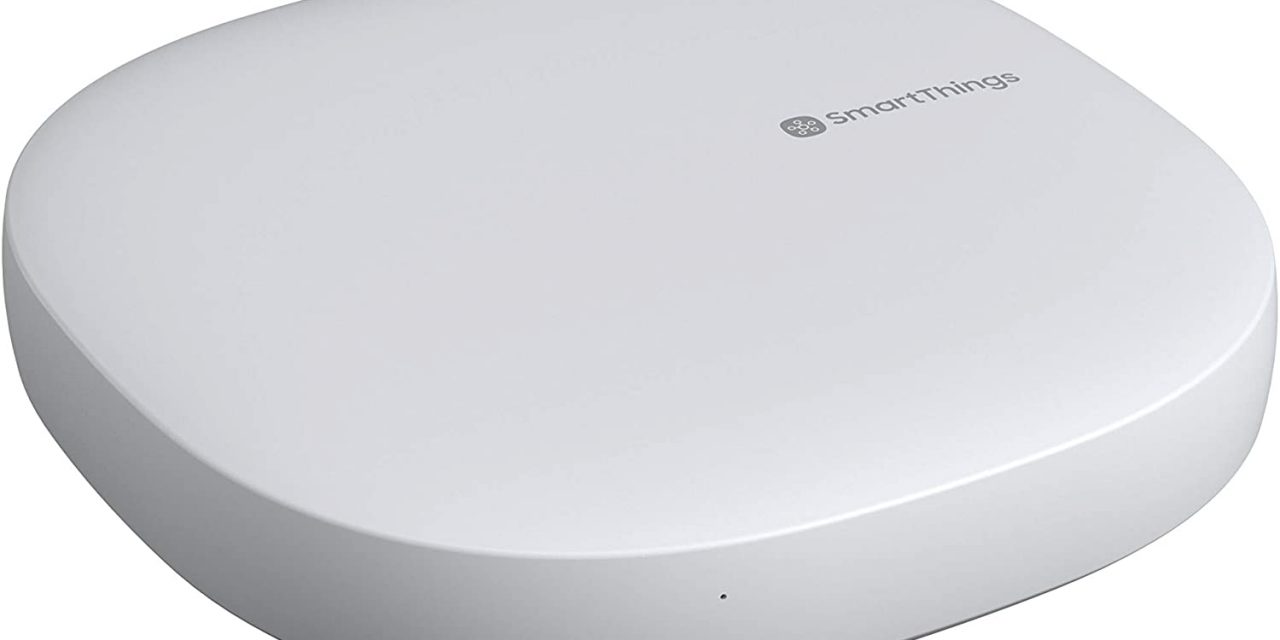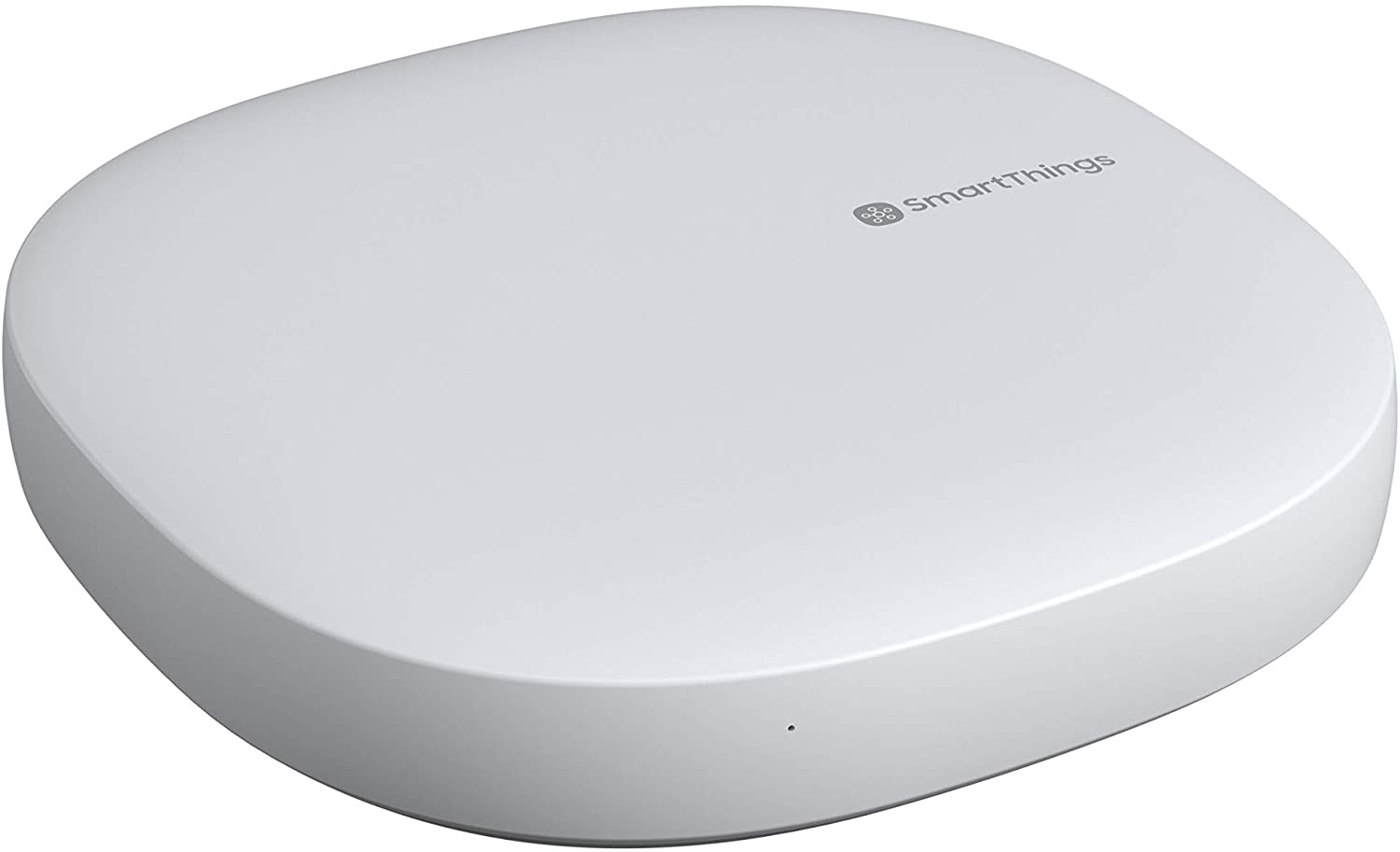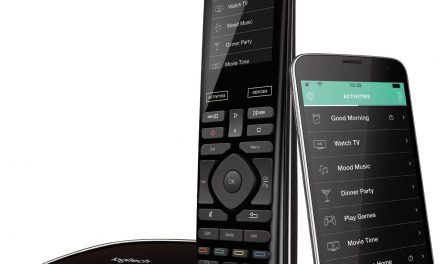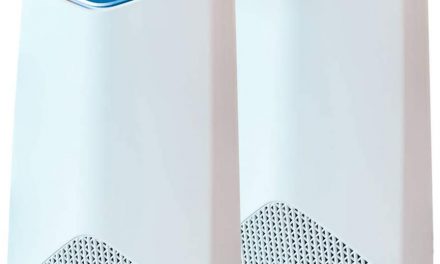It is not easy to narrow down to the best Z-Wave hub in a market full of options. Ideally, it is best to go for a Z-Wave hub that supports other wireless protocols, is easy to setup and is Z-Wave certified. In this buying guide, we will explore the top ten best Z-Wave hubs that are aesthetically pleasing, come with powerful processors, are easy to install and setup, support a wide range of devices which ensures that virtually every smart home automation device in your home is covered and offer rock solid performance. Which of these Z-Wave hubs is better than the rest? We will have a look at each Z-Wave hub and bring out all the features present to help you make a judgment as to which Z-Wave hub best suits your unique needs. In addition, we will include details about which Z-Wave hub best suits the needs of those buying on a very tight budget.
Alternatively, just skip to the best Z-Wave Hub on Amazon
Table of Contents
Best Z-Wave Hubs Comparison Table
List of 10 Best Z Wave Hubs
1. Samsung GP-U999SJVLGDA 3rd Generation SmartThings Hub
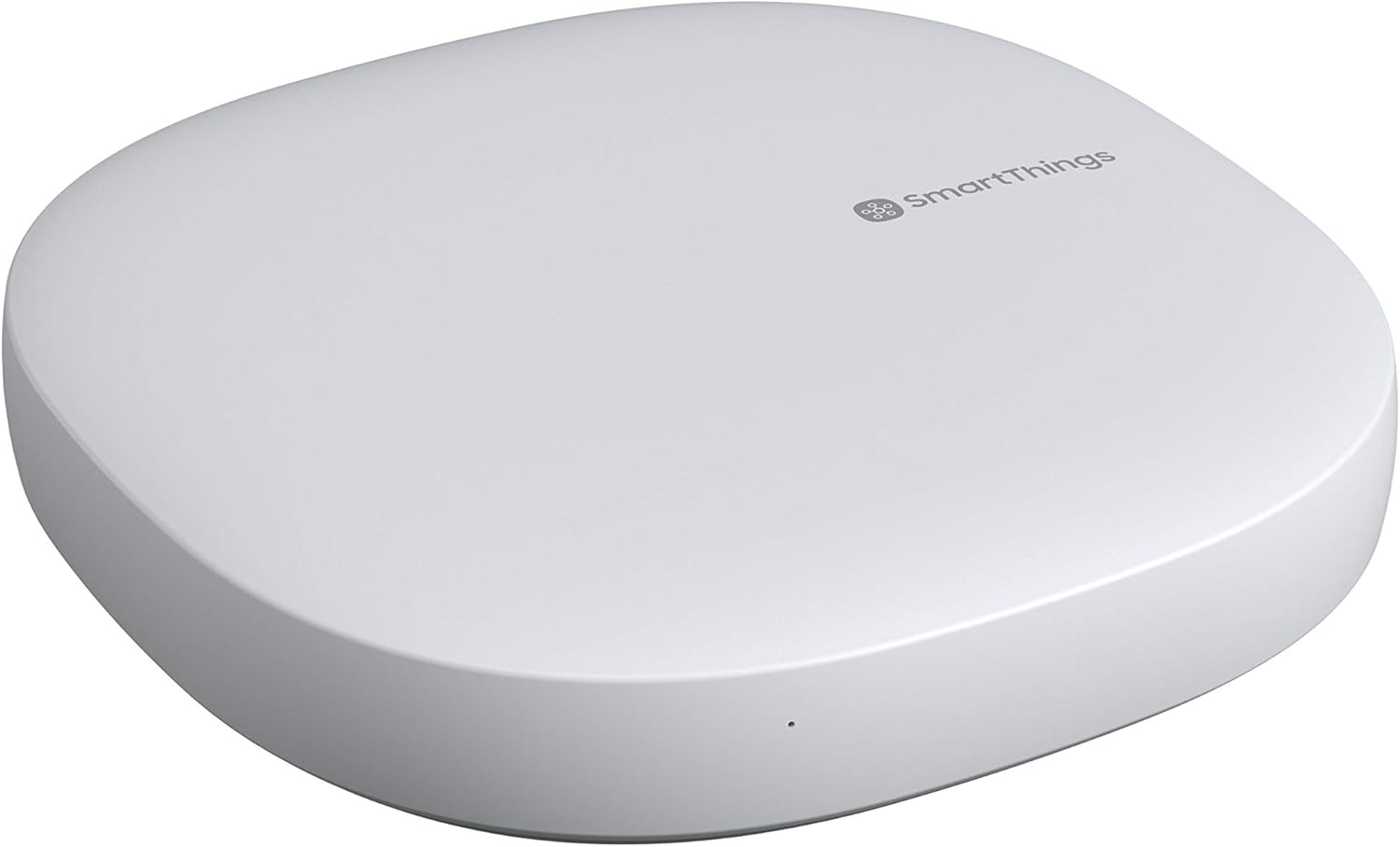
This device was introduced to allow easy, efficient control of the devices in your smart home. It provides robust home automation due to features that allow it to automatically turn devices on or off throughout the day once your teach it your “good morning”, “goodbye” and “goodnight” routines. It can be easily connected to a wide variety of devices from a wide variety of brands. These are cameras, speakers, sensors, voice assistants, and light & switches from 40+ partner brands. This device allows for voice control using Google Assistant and Smart Things. This is the best Z Wave Hub on the market.
2. Aeotec Z-Stick Gen5

This is a Z-Wave controller that is much cheaper than the other products listed above. It is not an independent Z-Wave controller and it needs a computer or Raspberry Pi to plug this device into and start using it. This can be both an advantage and a disadvantage as this makes it easy to carry around, but at the same time makes it undesirable for long term applications.
This small but powerful device works with Raspberry Pi, Windows, Mac and Linux based systems to create a Z-Wave gateway to control the Z-Wave devices present in the home. It can be used to upgrade the firmware of compatible Z-Wave Plus devices that accept OTA or wireless firmware updates. It is compatible with Z-Wave enabled home automation software such as Indigo 7, OpenHab2, Home Seer and the Home Assistant. It only uses the Z wave communication protocol. This is the cheapest Z Wave Hub on the market.
3. Abode Essentials Starter Kit
This Z-Wave hub offers professional grade home security as well as home automation features. It is a Z-Wave hub that is incredibly rich with features. It is a self-monitored and self-controlled home security platform. You can easily control it using abode web or you can use the mobile application from the manufacturer. This device comes with no monthly subscriptions. This is a great advantage as it keeps your bills low in the long-run. You can easily monitor your own system for free. If you want professional monitoring, the company offers this option and you can easily sign up for it with no long term contracts. This is quite a pleasant feature considering that nowadays if you do not read the fine print, the products can easily throw you down a rabbit hole of obligations, contracts and hidden service fees that you never thought existed. It is compatible with smart speakers e.g. Google Home, Amazon’s Alexa, the Apple HomeKit. It is also compatible with IFTTT. The device leverages professional grade technologies like cellular, and it has battery backup to keep your home secure even if there is a power outage. It comes with a loud 93db siren that will definitely scare any thieves away from your house.
The features don’t end here. The product has the iconic CUE automation engine which is a well thought out feature that allows for easy automation. It allows for not only the IF this then that (IFTTT), but it also allows for the IF this THEN that BUT ONLY IF this.
The Z-Wave hub comes together with a gateway, a mini door/window sensor, a remote key fob and a motion sensor. This is quite a generous package.
4. ISY994iZW+/IR-PRO Universal Devices Home Automation Controller Smart Hub ISY994i ZW/IR PRO Z-Wave + X10
This is a powerful Z-Wave Hub that comes with robust device support. It can be controlled from any computer or Mac. It can also be controlled from any mobile product. This allows for home automation to be done from virtually anywhere. It has a unique feature – the universal remote. This device is equipped with an infrared sensor which allows for you to control it using your R5 TV remote.
It is network based which means you need to plug it into your internet connection in order for you to use all of its features. It allows you to control up to 1024 nodes, with support of up to 1000 programs. This helps you manage multiple devices easily. It is also expandable and compatible with other home automation devices and services such as IFTTT AND Amazon echo. Once this unit is in place, there is absolutely no need to touch it. Everything is remote access. It is important to note that this product is for those with a technical background
5. Samsung SmartThings Smart Home Hub 2nd Gen
This is a product that looks gorgeous. It has an elegant white design which allows it to easily blend into your home décor. It is very simple to set up, and comes with a manual to help you out if you get stuck. It also comes with a power adaptor and has 10 hours’ worth of backup power from the 4 AA batteries that the product is shipped with. It works using a wide variety of protocols such as Z-Wave, ZigBee and IP. It works wirelessly with a wide variety of devices. These include speakers, locks, thermostats, sensors, lights and more. It is compatible with the following big brands: Philips Hue, Kwikset, and Honeywell. It comes with a powerful processor and local app engine which results in fast performance as well as offline processing. It is important to note that this device requires an internet connected Wi-Fi router which has a free Ethernet port. In addition you need to install the free SmartThings application for your Android or iOS device. You need to ensure that your Android or iOS Devices are up to date as the application is compatible with Android 4.1 going up and iOS 9.0 going up.
6. HomeSeer HomeTroller Zee S2 Home Controller
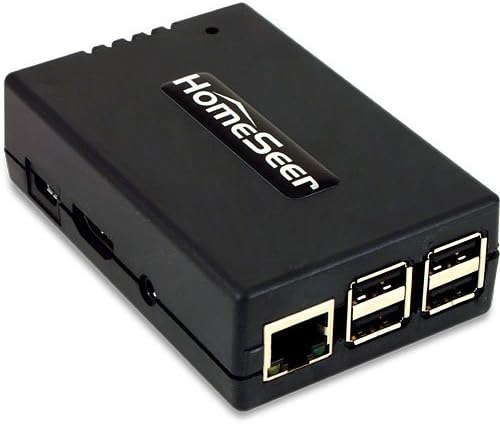
This is a simple to install and simple to use Z-Wave controller. It processes information locally which ensures that you do not experience delays that are common with other internet reliant solutions. The device stores sensitive information, and never transmits the sensitive information to the cloud thus preventing hackers and unauthorized individuals from accessing your personal data and your home automation schedules. It works with other home automation devices such as Alexa, Google Home, and it also works with IFTTT. It supports the Bluetooth, Z-Wave and ZigBee protocols. In addition to all this, the device has no monthly charges. However, it is not all roses. The web interface seems to need some work, and implementing Geofencing appears to be a bit challenging.
7. Securifi Almond+ : (3 Minute Setup) Long Range Touchscreen Wireless AC Gigabit Router + Home Automation Hub

This product from Almond is a device with a large host of features. This device is a home automation hub that can also act as a router. It is packed with a host of features to make it enhance the user experience. This Z-Wave Hub is suitable for users who seek a device that can automate and centralize the various systems in their home. It comes with an amazingly simple touchscreen that makes the set up process so easy that you do not need a Computer or web browser. It can be used as a Z-Wave hub, a router, a range extender, a wireless bridge or an access point. It allows both android and iOS users to remotely access the device as well as the sensors connected to it. In addition, the users can receive alerts e.g. when the windows open, or when the doors close. It has incredibly fast dual-band Wi-Fi which makes it perfect as a router for streaming your favorite television series from. In addition, it is open WRT based, and it supports ZigBee. The product however does not come with a user manual.
8. Vera Control VeraPlus-US Smart Home Controller Z-Wave Wireless Security

This is a Z-Wave hub that was named the “Top 6 smart home hub” by Digital trends. This definitely adds some credibility to the brand. This product can be used to control a wide variety of your home devices. These include your lights, locks, garage door, you name it. With the ability to control over 200 sensors, you are guaranteed to have every Z-Wave device in your house under the control of this powerful device.
This product supports devices from a wide variety of brands and models. Some of the most popular brands that this product supports are: Nest, Yale, Schlage, first alert, Kwikset and more. It allows for remote viewing of cameras on premises, allowing you to know exactly who is at home, and what they are doing from any part of the world. The company offers awesome tech support, and it has a strong community of users so you are guaranteed to get help if you get stuck. Best of all, this device comes with no monthly fees or contracts. This means that you can quickly setup your smart home with this system without worrying about any hidden fees and/or contracts.
9. Samsung Electronics F-ADT-STR-KT-1 SmartThings ADT Wireless Home Security Starter Kit
This is yet another Samsung device on the list. This Z-Wave hub can be used by both iOS and android users through their mobile apps. PC and Mac users, you haven’t been left out. There is a web portal where you can log in after creating your account. You can also save all the settings from the web and operate without a network application. This is a feature that you may find useful when you want to carry out bullet proof, full time operations such as security monitoring or operation of remote cameras. The device supports the following communication protocols: Z-Wave, ZigBee and IP network protocols. It can be used with home automation devices such as cameras, lights, door locks, thermostats as well as Alexa and Google Home. It is easy to install, has great customization options and uses cloud technology that deals with power offs saving all data. In addition, it comes with no monthly fees or contracts, and offers no contract ADT professional services with police dispatch which offers great protection for your family and home
10. Nexia BR200 Home Bridge
This is a device that is gorgeous. It is an easy to install, multipurpose Z-Wave hub that can be used to provide Wi-Fi connectivity to your home router. This makes it handy for placement where an Ethernet connection is not practical. It is able to control a wide range of devices such as lights, locks, thermostats, and other devices. It supports up to 200 Z-Wave devices. It has an average communication range of 60-100 feet. You can download a mobile application to use to log into you Nexia account and manage your home. The connection to the account is said to be secure. In addition, the product comes with a full backup and restore feature to give you peace of mind. It however needs internet service and a wireless router. It also needs you to fork out $9.99 per month as your subscription
Best Z-Wave Controller Brands
The Top brands are Samsung, abode and ISY994iZW+/IR-PRO. Samsung is the best all-rounder when it comes to compatibility, battery backup and ease of use. Abode is the best brand for those who are focused on security and ISY994iZW+/IR-PRO is for geeks and those who like to get their hands dirty.
There is a brand that we completely left out of this review. This is the Wink brand. This brand is quite an excellent brand that used to be a leader in the home automation sector. However, this brand’s future is now very uncertain because of the epic fall out it had with its customers. They introduced a mandatory 4.99 per month charge in May 2020 and gave the customers about a week to either pay the monthly charge or have their wink devices become obsolete. Their customers were not happy about it at all. As a result, we decided to leave out the brand just in case things go south.
Best Z-Wave Hub
Our winner is the Samsung GP-U999SJVLGDA 3rd Generation SmartThings Hub. This device has so many features that make it highly attractive. These are:
- Easy to setup
- Unobtrusive
- Backward compatible with older SmartThings devices
- Wide compatibility of communication technologies
- Good customer service
- Good battery life
In addition to all this, the device comes at a very attractive price point.
Cheapest Z-Wave Hub
This goes to the Aeotec Z-Stick Gen5
This is the cheapest device in the list above. It has the following key features:
- Small and powerful
- Works with a wide variety of operating systems
- Can work with a Raspberry Pi
- Cheap
These features may make it quite useful when one is trying out Z-Wave devices to see how they work. We would not recommend this as a long term solution.
What is a Z-Wave Controller & Hub?
Well, the best way to answer this question is for us to explain what Z-Wave is, explain the associated technologies and that will help you gain a thorough understanding of what these devices are. We promise not to get too technical.
What is Z-Wave?
Z-Wave is a wireless communications protocol that is primarily used for home automation. It uses a mesh network which utilizes low energy radio waves to communicate from one appliance to the other. This protocol is a propriety technology that was developed by the company Zensys.
The Z-Wave technology operates on the 800-900MHz radio frequency range. As you know, all wireless devices have a frequency range that they operate in. Your Wi-Fi devices for example operate in the 2.4 GHz and 5GHz bands. This may seem as an irrelevant point, but it is actually a key strength of the Z-Wave technology. This is because in smart home wireless networking, there are various technologies and standards that are competing to become the technology/standard of choice. There is Wi-Fi which uses the 2.4 GHz band, ZigBee which operates on the 2.4GHz band and Bluetooth also uses the 2.4 GHz band. This means that this band is heavily congested, and this therefore means the devices that use it are much more susceptible to interference. The Z-Wave band is relatively decongested which means that the Z-Wave devices are much less susceptible to interference. It is important to note that the exact frequency that the Z-Wave device operates at depends on the country that the Z-Wave device is going to be used in. For instance, the US uses 908.40, 908.42 and 916MHz; whereas the UK and Europe uses 868.40, 868.42, 869.85MHz. It is imperative that you make sure that the Z-Wave device that you are buying is designed for your region.
The low frequency range also has other advantages associated with it. In general, the higher the frequency, the higher the bandwidth and the data transmission rate. This therefore means that technologies such as Wi-Fi are able to transmit a lot more information than the Z-Wave technology. The higher speed and bandwidth comes at a cost. The higher the frequency, the less the radio frequency signals are able to penetrate objects. This means that the devices using the Z-Wave technology which uses the lower frequency are less affected by the presence of objects such as walls. The data transmission rate is much lower than that of other technologies, but this is not a big problem since the devices that use Z-Wave transmit much less data than those that use other technologies.
How does a Z-Wave Hub network work?
Z-Wave uses a source-routed mesh network architecture. In such networks what happens is that the devices (commonly referred to as nodes) that are present in the network use the wireless communication channel (Z-Wave) to send control messages that are then sent to the neighbouring devices in a wave like fashion. This is very much unlike the Wi-Fi technology in which the devices have to connect to a central hub. The control messages and signals can hop from one device to another in the mesh network. The maximum number of hops that is permitted in this technology is 4 hops. This allows for indirect communication which adds a layer of flexibility to the network. This means that the devices in the mesh network can send messages to each other when they are not in direct range. In mesh networks the more devices that are added, the stronger the mesh network.
There are some Z-Wave Hubs that you will see that support various standards such as Z-Wave and ZigBee. This simply means that the hub will have internal Z-Wave and ZigBee radio antennae. This will allow the bub to act as the primary controller for both the Z-Wave and ZigBee networks.
The Z-Wave device can be connected to only one primary controller from which it receives and responds to commands. It is not currently possible to have the device in the mesh network to respond to two hubs.
Why You Need a Z-Wave Hub
The Z-Wave Hub is perfect for home use because the technology it is based upon, the Z-Wave technology offers numerous advantages.
Reliability
It is of very little use to have smart home appliances that use an unreliable communication protocol. This is because in critical applications such as controlling a thermostat, having an unreliable communication protocol could prove to be extremely dangerous.
The Z-Wave technology used by the Z-Wave Hub operates on the 800-900 MHz range which is relatively uncongested. Without the competition for resources, the Z-Wave network is able to create and maintain strong connections.
Interoperability
The most important factor in a smart home is convenience. If there is a need for multiple hubs and applications, the homeowner will then be forced with constantly figuring out the exact operation of each app and each hub, and this is quite a frustrating process. The Z-Wave technology is operated and run under the Z-Wave alliance which oversees the certification of all the devices that use this technology. This means that every certified Z-Wave device is guaranteed to work with every Z-Wave controller. There are over 600 manufacturers that are responsible for over 2000 devices between them. This therefore means that inoperability is a key advantage of the Z-Wave technology.
Signal Range
A smart home does not include the interior only. It also includes the exterior. This includes the sensors present outside that control the lights, security, and gate. This means that you will need a device that will offer excellent coverage. The devices that use the Z-Wave technology are able to send signals between nodes up to distances in excess of 300 feet. In the home, Z-Wave signals are able to travel up to 50 feet with walls in the way.
Power Usage
The Z-Wave technology uses remarkably little power. This is very much unlike other technologies such as Wi-Fi that are power hungry. This is a very great advantage as most smart homes have devices that use batteries. This ensures that the device’s batteries will have a longer life.
Network Configuration
Z-Wave networks are mesh networks. Unlike in a star network such as Wi-Fi network where if the device goes out of range of the central hub the device ceases to be part of the network, in Z-Wave the device continues to be part of the network. In mesh networks, the signal starts from the central hub, but there is no direct need for communication with this central hub. Each device acts as a repeater that serves to pass signals from one device to another in the network. This is a key advantage of the Z-Wave technology.
Security
Z-Wave uses the AES 128 encryption standard. This means that the home owner is guaranteed of safety from hackers.
What Types of Devices Can Z – Wave Control?
The Z-wave technology can control a wide range of devices. These devices include actuators, controller and sensors.
Some of the most widely used devices include: garage doors, smart locks, smoke detectors, lighting controls, smart home security systems, thermostats, on/off outlets and remote controls. The list is endless. These are just but a few devices that we decided to mention.
These devices are manufactured by manufacturers that are part of the Z-Wave alliance. This means that the devices work well with any Z-Wave hub, and you are guaranteed of reliable performance from the devices.
Factors to consider when buying Z Wave Controllers
Communication Protocols
Your smart devices in your smart home use a wide variety of communication protocols. In this case, we assume that the majority of your devices use the Z-Wave protocol. This does not mean, however that all of your devices use this protocol. This means that it is best to choose a hub that has the communication protocols that allow for it to communicate with the majority of your devices. In this case, this could mean the more the better. You never know what communication protocol your new smart device will use.
Voice Activation
Not all Z-Wave hubs are integrated with voice sensors. This is an important factor to consider when choosing a Z-Wave hub. An added voice control functionality makes the smart home experience feel even better. If, however, you are afraid of having a hub that listens to you all the time, you can consider opting for a hub with remote or app control only.
Operating System
The Z-Wave hubs are usually packaged with applications that are used to control them. You really need to consider which platform is supported by the Z-Wave hub that you intend to buy. If you use the iOS platform, you need to ensure that your Z-Wave hub works with your iOS device. Likewise, if you are an android user, you need to ensure that your device works well with your android device.
Extra Functionality
The Z-Wave hubs are now equipped with better abilities. These better abilities were added by manufacturers after they realized that adding a smart device means more device clutter. This led the manufacturers to innovate and add more functionalities to the smart Z-Wave hubs to reduce the device clutter. It is now common to see smart hubs also acting as Wi-Fi routers or even security hubs.
Device to Device Automation
This is the other feature that you need to consider. You need to choose a hub that is built around powerful software platforms that are able to help you to create device-to-device automation such as IFTTT. This will help you to easily create routines. Not every hub is enabled to create such automation. It is therefore important for the consumer to choose a hub that allows this feature.
Ease of Use
You do not want to be stuck with a hub that needs a genius like Einstein to operate it. Also, the smartphone apps that the hub has should not need you to be a computer whiz to use it. Remember that the whole reason that home automation devices were introduced was to make life easier for you. Choose a product that is easy to use.
Conclusion
This long article has brought up the main brands that are present in the Z-Wave home automation industry. We also gave our tips on how to choose the best Z-Wave hub for you to use. Checkout the best Z-Wave Hubs on Amazon

